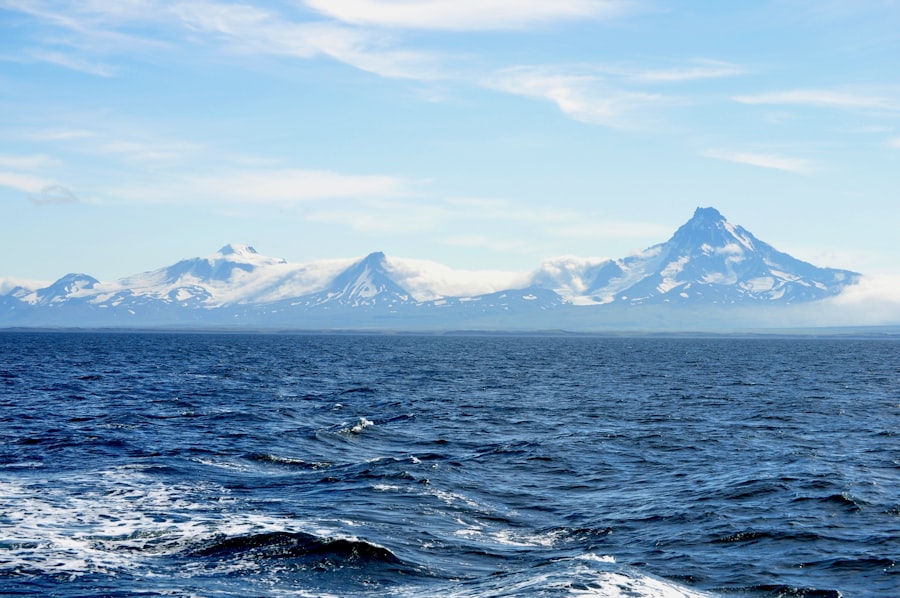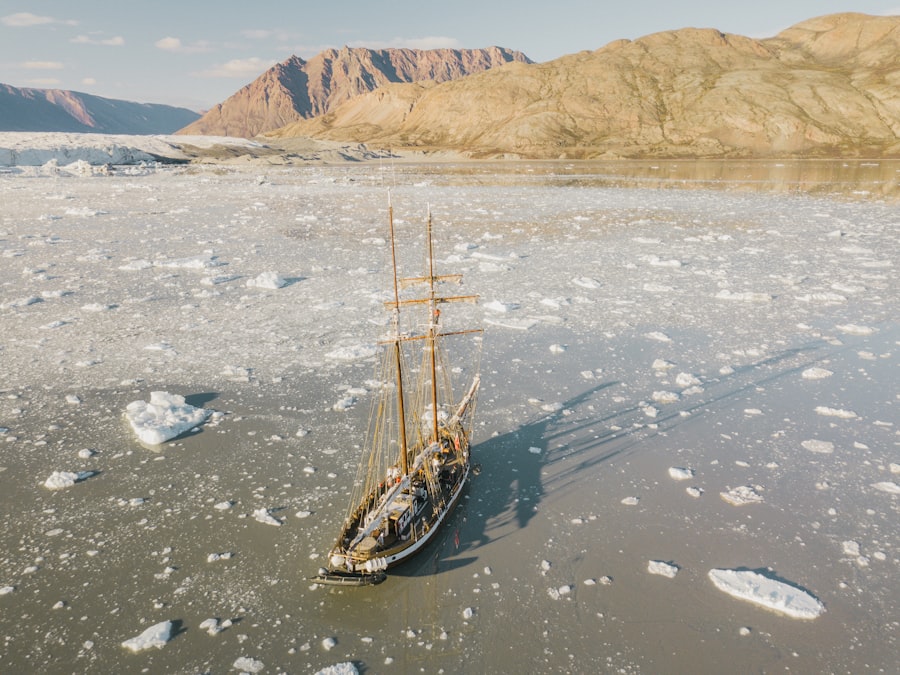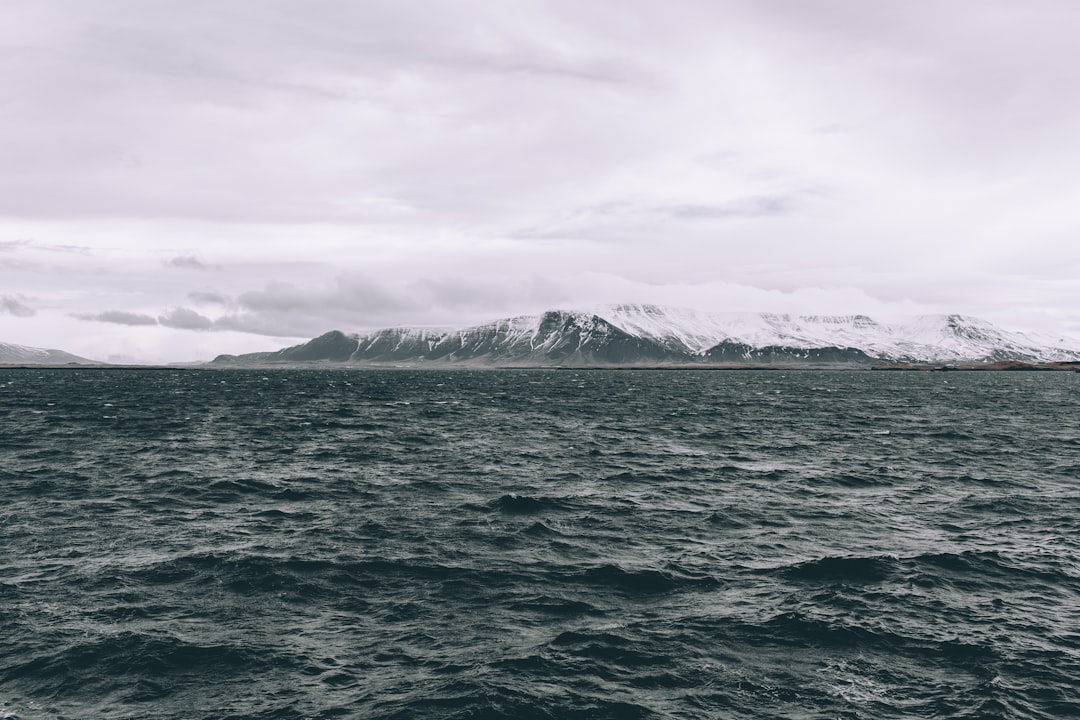The Drake Northwest Passage, often referred to simply as the Drake Passage, is a body of water that separates South America from Antarctica. This maritime corridor is not only significant for its geographical location but also for its historical and ecological importance. The passage is renowned for its tumultuous waters and unpredictable weather, making it a formidable challenge for sailors and explorers alike.
It serves as a critical route for maritime navigation, linking the Atlantic and Pacific Oceans, and has been a focal point for exploration and scientific research. The Drake Passage is characterized by its unique blend of natural beauty and perilous conditions. Stretching approximately 600 miles, it is known for its strong currents and high waves, which can reach heights of over 30 feet.
Despite these challenges, the passage has become a vital area for shipping routes and tourism, attracting adventurers and researchers eager to explore its depths. The allure of the Drake Passage lies not only in its dramatic landscapes but also in the rich tapestry of life that thrives in its waters.
Key Takeaways
- The Drake Northwest Passage is a historically significant and challenging route for exploration.
- The passage has a rich history of exploration dating back to the 16th century.
- The geographic features of the Drake Northwest Passage include rugged coastlines, icy waters, and remote islands.
- The area is home to diverse wildlife and unique ecosystems, including polar bears, whales, and seabirds.
- Indigenous peoples have inhabited the region for thousands of years, with distinct cultures and traditions.
History of the Drake Northwest Passage
The history of the Drake Northwest Passage is steeped in exploration and discovery. Named after Sir Francis Drake, an English sea captain and privateer, the passage has been a site of intrigue since the late 16th century. Drake was one of the first Europeans to navigate these treacherous waters during his circumnavigation of the globe in 1577.
His journey opened up new possibilities for trade and exploration, setting the stage for future expeditions into the region. Over the centuries, the Drake Passage has witnessed numerous attempts to chart its waters and unlock its secrets. The quest for a navigable route through the Arctic led many explorers to brave the challenges of the passage.
The early 20th century saw significant advancements in navigation technology, which allowed explorers to venture further into these icy waters. The passage became a symbol of human resilience and determination, as adventurers sought to conquer one of nature’s most formidable barriers.
Geographic Features of the Drake Northwest Passage

The geographic features of the Drake Northwest Passage are as diverse as they are striking. The passage is flanked by the rugged coastlines of South America to the north and the icy expanses of Antarctica to the south. Its waters are characterized by deep channels and underwater ridges, creating a complex marine environment that supports a variety of ecosystems.
The convergence of cold Antarctic waters with warmer currents from the north results in a unique mixing zone that fosters rich marine biodiversity. In addition to its dynamic water systems, the Drake Passage is home to numerous islands and archipelagos, each with its own distinct geological features. The South Shetland Islands, for example, are located just north of the Antarctic Peninsula and are known for their volcanic activity and glacial landscapes.
These islands serve as important waypoints for vessels navigating through the passage, providing shelter from harsh weather conditions. The dramatic topography of the region, combined with its ever-changing climate, makes the Drake Northwest Passage a captivating subject for geologists and environmental scientists alike.
Wildlife and Ecosystems of the Drake Northwest Passage
| Metrics | Data |
|---|---|
| Number of Polar Bears | 120 |
| Population of Arctic Foxes | 80 |
| Seal Species Diversity | 5 |
| Number of Beluga Whales | 50 |
| Plant Species Diversity | 120 |
The wildlife and ecosystems found within the Drake Northwest Passage are among the most diverse and vibrant on the planet. The nutrient-rich waters support an abundance of marine life, including krill, which serves as a crucial food source for larger species such as whales, seals, and seabirds. The passage is particularly famous for its populations of humpback whales, orcas, and blue whales, which migrate through these waters in search of food during certain times of the year.
In addition to marine mammals, the Drake Passage is home to a variety of seabirds that thrive in its harsh conditions. Species such as albatrosses, petrels, and skuas can often be seen soaring above the waves or diving into the water in search of fish. The unique ecosystems found in this region are not only vital for sustaining wildlife but also play a significant role in global ocean health.
The interplay between marine life and their environment highlights the importance of preserving these delicate ecosystems for future generations.
Indigenous Peoples and Cultures of the Drake Northwest Passage
The indigenous peoples who have historically inhabited regions surrounding the Drake Northwest Passage possess rich cultural traditions that have been shaped by their relationship with the land and sea.
These cultures have thrived for thousands of years, relying on fishing, hunting, and gathering as their primary means of sustenance.
The indigenous peoples’ knowledge of the local environment is invaluable, offering insights into sustainable practices that have been passed down through generations. Their stories and traditions reflect a profound respect for nature and an understanding of its rhythms. As modern exploration continues to unfold in this region, it is crucial to honor and incorporate indigenous perspectives into conservation efforts and tourism practices to ensure that their voices are heard and their heritage preserved.
Challenges and Dangers of Exploring the Drake Northwest Passage

Exploring the Drake Northwest Passage presents numerous challenges and dangers that can test even the most seasoned adventurers. The unpredictable weather patterns in this region can change rapidly, leading to treacherous conditions that pose significant risks to navigation. Strong winds, dense fog, and sudden storms can create hazardous situations for vessels traversing these waters.
Mariners must be well-prepared and equipped to handle such challenges if they wish to navigate safely through this formidable passage. In addition to weather-related dangers, icebergs and sea ice present another layer of risk for explorers in the Drake Passage. The presence of floating ice can obstruct navigation routes and create hazards for ships attempting to pass through.
Collisions with icebergs can result in catastrophic consequences, making it imperative for explorers to remain vigilant and informed about ice conditions before embarking on their journeys. Understanding these challenges is essential for anyone considering an expedition into this remote and wild region.
Famous Expeditions and Explorers of the Drake Northwest Passage
Throughout history, many famous expeditions have sought to explore the mysteries of the Drake Northwest Passage. One notable figure is Ernest Shackleton, whose ill-fated Antarctic expedition in 1914 became legendary due to his remarkable leadership during adversity. Shackleton’s journey through these treacherous waters highlighted both the allure and dangers of exploring this remote region.
His story continues to inspire adventurers today who seek to follow in his footsteps. Another prominent explorer associated with the Drake Passage is Roald Amundsen, who was the first person to successfully navigate through it during his quest to reach Antarctica in 1911. Amundsen’s meticulous planning and understanding of polar conditions allowed him to achieve this remarkable feat.
His expeditions not only contributed significantly to our understanding of polar geography but also paved the way for future explorations in these challenging waters.
Climate Change and the Future of the Drake Northwest Passage
Climate change poses significant threats to the delicate balance of ecosystems within the Drake Northwest Passage. Rising global temperatures are leading to melting ice caps and changing ocean currents, which can disrupt marine life and alter habitats. As ice continues to recede in some areas, new shipping routes may open up, increasing human activity in this fragile environment.
This shift raises concerns about potential ecological impacts and highlights the need for sustainable practices in any future development. The future of the Drake Northwest Passage will likely be shaped by ongoing climate changes that affect both wildlife populations and human interactions with this region. Scientists are closely monitoring these changes to better understand their implications for biodiversity and ecosystem health.
As awareness grows about climate change’s impact on polar regions, there is an increasing call for conservation efforts aimed at protecting this unique maritime corridor from further degradation.
Recreational Activities and Tourism in the Drake Northwest Passage
Recreational activities in the Drake Northwest Passage have gained popularity among adventure seekers looking to experience its breathtaking landscapes firsthand. Cruise ships offering guided tours through these waters provide travelers with opportunities to witness stunning glaciers, towering mountains, and diverse wildlife up close. Kayaking expeditions allow visitors to explore hidden coves while observing marine life in their natural habitats.
Tourism in this region has also led to increased interest in educational programs focused on environmental conservation and indigenous cultures. Many tour operators emphasize responsible travel practices that prioritize sustainability while fostering respect for local communities. As more people venture into this remote area, it becomes increasingly important to balance tourism with conservation efforts to ensure that future generations can enjoy its beauty without compromising its integrity.
Conservation Efforts in the Drake Northwest Passage
Conservation efforts within the Drake Northwest Passage are essential for safeguarding its unique ecosystems from human impact. Various organizations work tirelessly to promote sustainable practices among tourists and commercial operators alike. Initiatives aimed at reducing pollution from ships, protecting marine habitats, and preserving biodiversity are crucial components of these efforts.
Collaboration between governments, non-profit organizations, indigenous communities, and researchers plays a vital role in advancing conservation goals in this region. By fostering partnerships that prioritize ecological health while respecting cultural heritage, stakeholders can work together toward creating a sustainable future for both wildlife populations and local communities dependent on these resources.
Tips for Exploring the Drake Northwest Passage Safely
For those considering an expedition into the Drake Northwest Passage, safety should always be a top priority. First and foremost, thorough research is essential before embarking on any journey through these challenging waters. Understanding weather patterns, potential hazards, and navigation routes will help ensure a safer experience.
Travelers should also invest in high-quality gear designed specifically for polar conditions—this includes waterproof clothing, sturdy footwear, and reliable communication devices. Additionally, joining guided tours led by experienced professionals can provide valuable insights into navigating safely while minimizing environmental impact. By taking these precautions seriously, adventurers can enjoy all that this remarkable region has to offer while respecting its natural beauty and cultural significance.
For those interested in the historical and geographical significance of such explorations, an article on the
